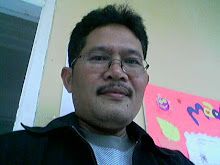Toba is a lake that has a length of 100 km and 30 km wide and is located in the northern island of Sumatra, Indonesia.
Lake Toba was formed by the eruption of a "Supervolcano" a very terrible and there hundreds of thousands of years ago. Eruption "Supervolcano" which last occurred in approximately 75,000 years ago. According to Bill Rose and Craig Chesne from Michigan Technological University eruption that occurred circa 75,000 years ago it was caused by tectonic earthquake of 8.0 magnitude and approximately 2800 Km3 material removed from the bowels of the earth where a 2000 Km3 material falling into the ignimbrite 800 Km3 land and materials in the form of volcanic ash blown into the air. The incident lasted for almost 2 week. Resulting in a large sulfur emissions and emissions are then reacted with water vapor and clouds forming sulfuric acid coat around the world. When the temperature of the world lasted about 6 degrees Celsius and causing the ice age that lasted a millennium.
As a result of the eruption 'Supervolcano "then formed a huge caldera. After that the caldera was filled by water, created Lake Toba. Then the surface of the caldera partly lifted up because of enormous pressure from the remaining magma eruption "Supervolcano". Formed an island that is now known by the name of Samosir Island.
According to Professor Ambrose volcanic caldera which is now Lake Toba in Sumatra, erupted with a force three thousand times greater than the eruption of Mount St. Helens in the United States in 1980. This causes a decrease in the average temperature of about 3-3,5 ° C for several years. And can result in a reduction of more than 15 ° C in temperate climates. This radical change of environment is the cause of what has been called a "barrier" of people in various species of hominids that existed then.
According to this theory, humans, after Toba, will spread again when the climate and other factors permit. Starting from Africa, they migrated to Indochina and Australia and then to the Fertile Crescent and the Middle East. The route of migration creates population centers in Uzbekistan, Afghanistan and India. The differences of skin color appears, due to varying levels of melanin are adjusted to local variations in the intensity of UV light. Europe is inhabited by migrants from Central Asia at the end of the last Ice Age gradually.
In supporting the theory of "generation Toba" in general and the origin, the unity of human culture is observed through the analysis of language, humans based on cosmogony and myths. All languages have a common origin, which tend to confirm the study of human myths, where we find themes similar, based on the structure of the legal culture archetypes. The Wurm glaciation began at around -70 000 Supervolcano explosion (-75 000). This fact indicates that the volcanic eruption is a major event and trigger climate change that does not end there 11 000 years.
In contrast to this theory, archaeological discoveries recently in South India showed that although human activities do not seem to be so disturbed over this period. 500 stone tools show the continuity of traditional techniques have been found, which tends to show that there is no destruction of genetic evolution or extinction

No comments:
New comments are not allowed.